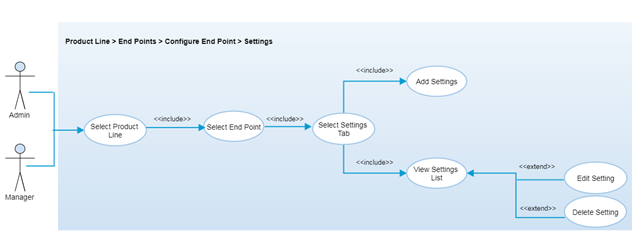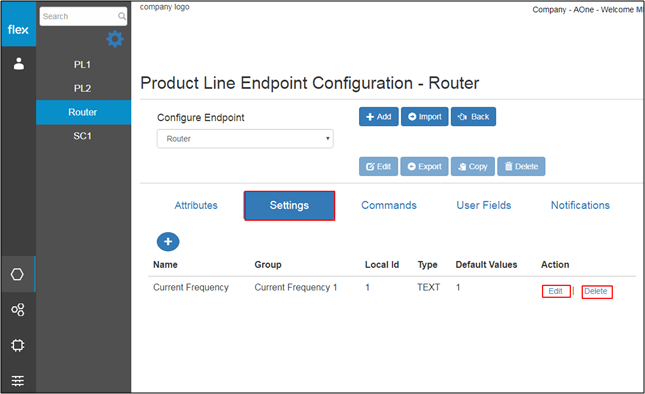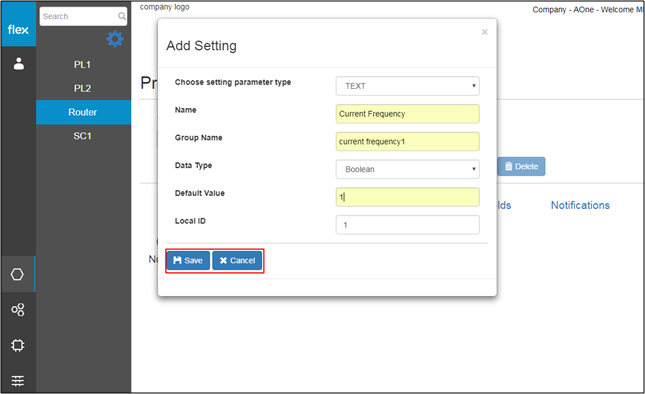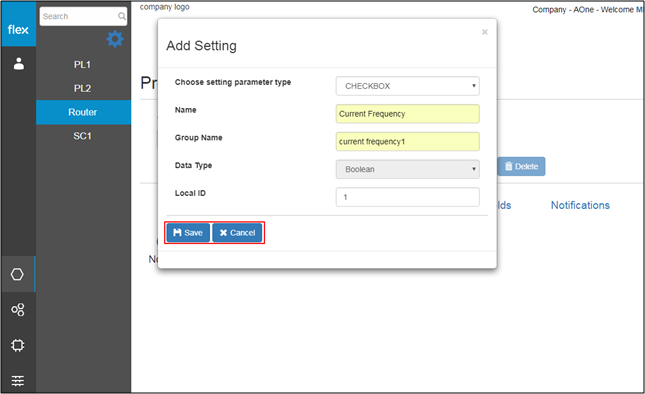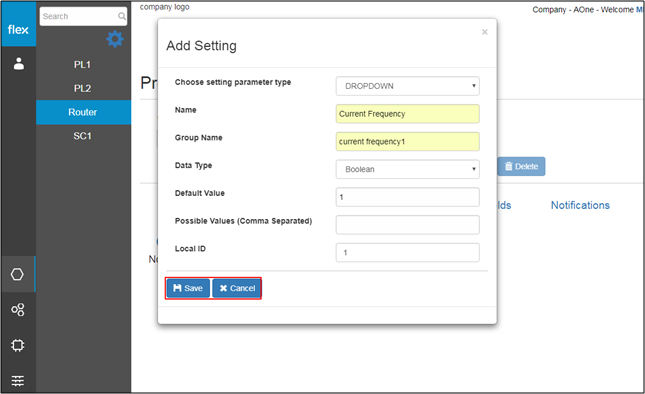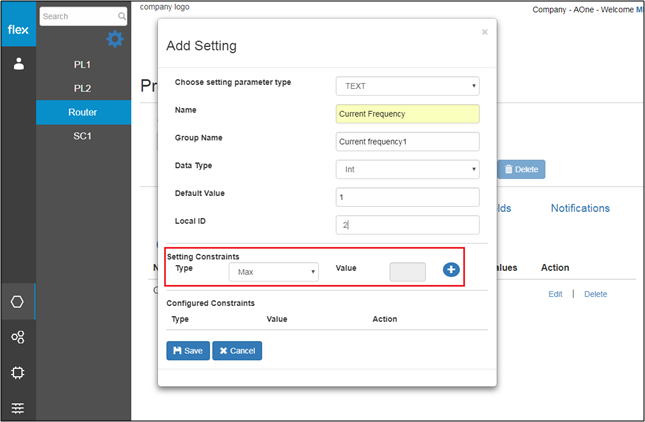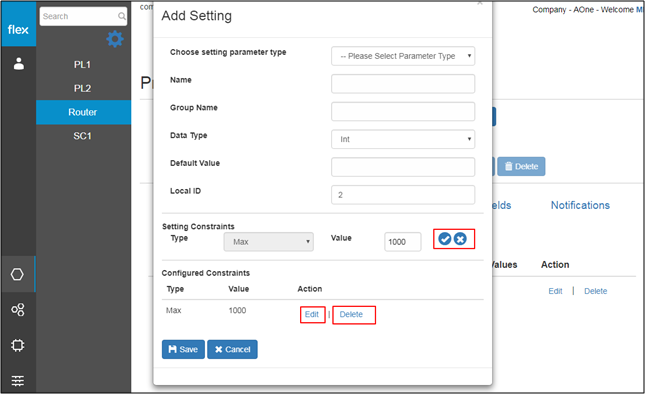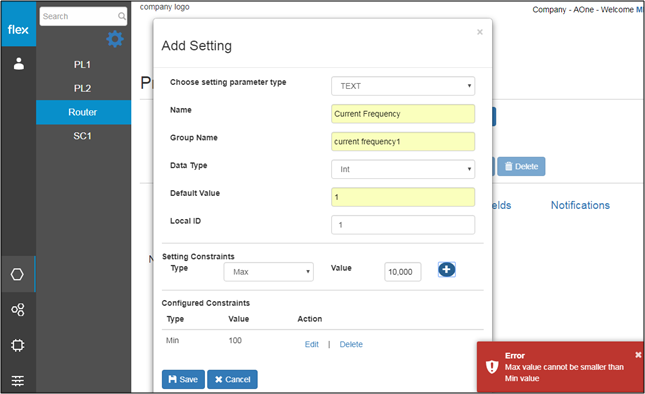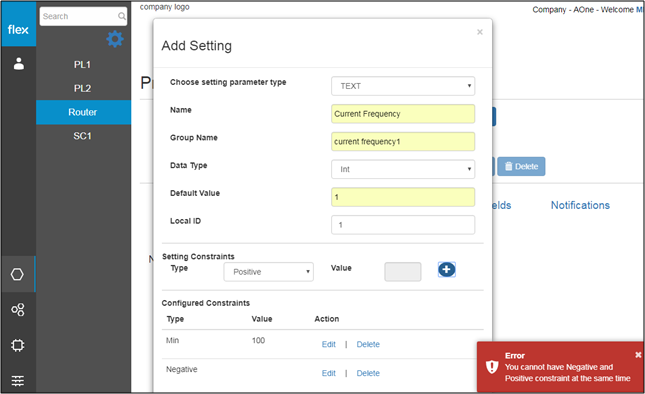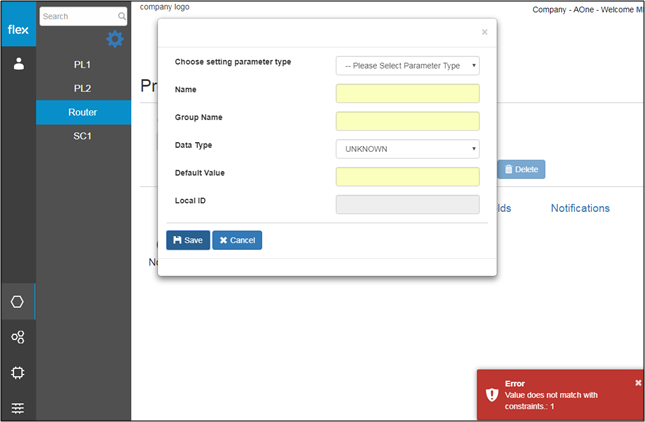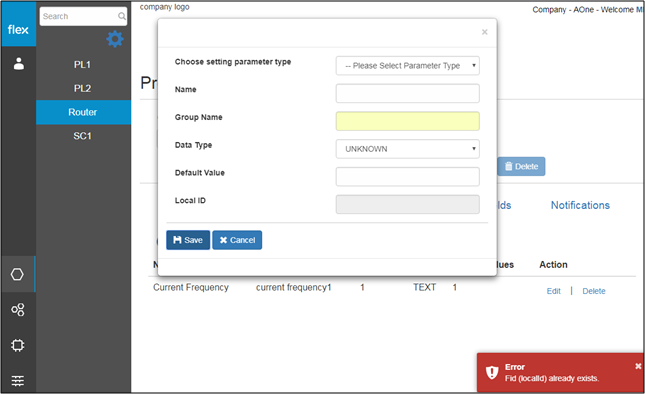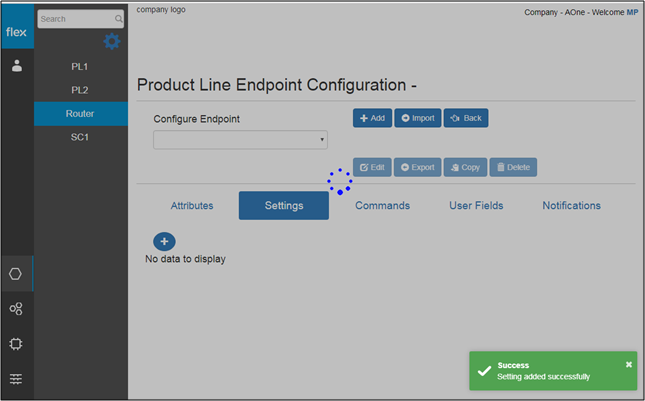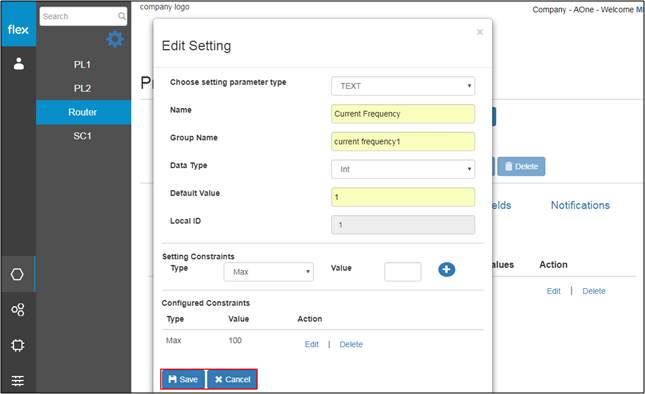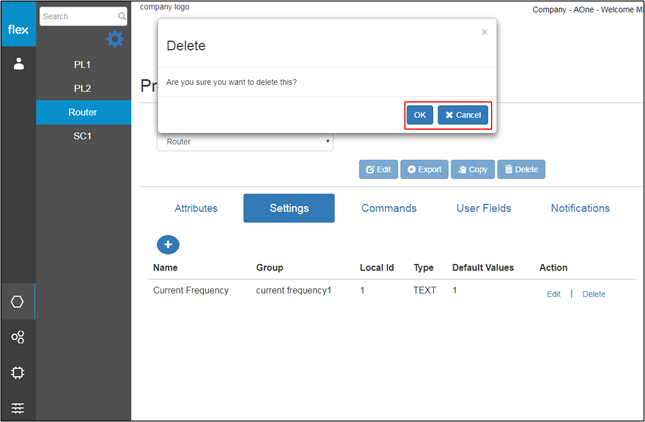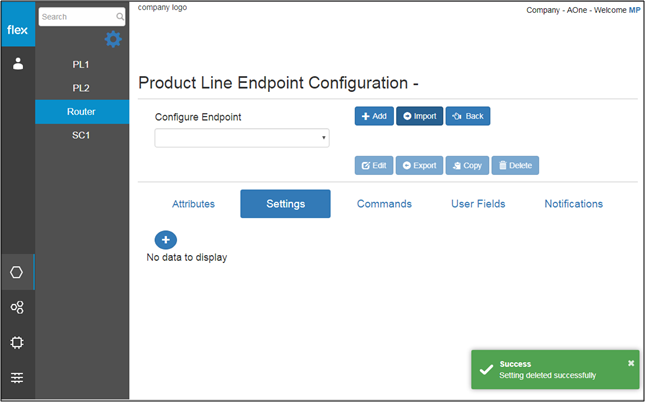Configure Product/Endpoint - Settings
Overview
Settings are used to manage read/write values by different setting parameter type for the products. It contains two way communications that gathers the data from the endpoint and sends to the cloud, processes the data or gathers additional data from the cloud and sends back to the endpoints based on instructions they have given.
Authorized users are able to select the configure endpoint option for any product line and can add/edit/delete the settings for that particular endpoint from the “Settings” tab. Once the endpoint of any product line is created, authorized users can add settings for that particular endpoint. It is required to add the settings so that endpoint can be able to send/receive the settings data to/from the system.
Step-by-Step Process
Step 1 – Endpoint Settings
- Select any endpoint from the “Configure Endpoint” drop down
- Click the “Settings” tab to view the list of previously added settings and the following details:
- Name
- Group
- Local Id
- Type
- Default Values
- Edit
- This navigates users to the “Edit Settings” page (Refer to Step 3)
- Delete
- This navigates users to the “Delete Settings” page. (Refer to Step 4)
- Click on “+” button to add new settings
- This navigates users to the “Add Settings” page. (Refer to Step 2)
Step 2 – Add Settings
- Select “TEXT” as a parameter type then below details need to be entered to add settings
Field | Type | Required? | Description |
|---|---|---|---|
Choose Setting Parameter Type | Drop Down | Yes | This field requires choosing the setting parameter type. Drop down will contain below values: - Text - Drop down - Checkbox |
Name | Text Box | Yes | This field requires unique name for the setting values |
Group Name | Text Box | Yes | This field requires group for the setting values |
Data Type | Text Box | Yes | This field requires data type for the setting values |
Default Value | Text Box | Yes | This field requires default value for the setting values |
Local ID | Text Box –unique identifier | Yes | It requires Local ID as unique identifier for the setting values |
- If user selects “CHECKBOX” as a parameter type then below details need to be entered to add settings.
Field | Type | Required? | Description |
|---|---|---|---|
Choose Setting Parameter Type | Drop Down | Yes | This field is requires to choose the setting parameter type. Drop down will contain below values: - Text - Drop down - Checkbox |
Name | Text Box | Yes | This field requires unique name for the setting values |
Group Name | Text Box | Yes | This field requires group for the setting values |
Data Type | Text Box | Yes | This field requires data type for the setting values |
Local ID | Text Box | Yes | It requires Local ID as unique identifier for the setting values |
- If user selects “DROP DOWN” as a parameter type then below details need to be entered to add settings.
Field | Type | Required? | Description |
|---|---|---|---|
Choose Setting Parameter Type | Drop Down | Yes | This field is requires to choose the setting parameter type. Drop down will contain below values: - Text - Drop down - Checkbox |
Name | Text Box | Yes | This field requires unique name for the setting values |
Group Name | Text Box | Yes | This field requires group for the setting values |
Data Type | Text Box | Yes | This field requires data type for the setting values |
Default Value | Text Box | Yes | This field requires default value for the setting values |
Possible Values | Text Area | No | It allows users to enter the multiple possible values (comma separated) |
Local ID | Text Box –unique identifier | Yes | It requires Local ID as unique identifier for the setting values |
- If any data type except “Boolean” is selected then users will get an option to add attribute constraints as below:
Field | Type | Required? | Description |
|---|---|---|---|
Settings Constraints Type | Drop Down
| Yes | This field requires settings constraints type. Drop down will contain below values: - Max - Negative - Min - Positive |
Value | Text Box |
| This filed requires value of selected settings constraints. In case of negative and positive constraints, no need to select the value. |
- Edit Constraints
- Click on edit button to edit the constraints.
- Click on edit button to edit the constraints.
- Click on “True Icon” to save the edited values.
- Click on “Cancel icon” to cancel the edit.
- Delete Constraints
- Click on delete button to delete the constraints. On clicking constraints will be deleted.
- Click on “Save” button to save the data.
- Click on “Cancel” to go back to “End Point Settings” page without saving setting details.
- It checks for the below validations and notifies user with proper error message
- In case of field level validation
- In case of field level validation
- In case of max value smaller than min value
- In case of max value smaller than min value
- In case of when user adds positive and negative both values for the attribute
- In case of when user adds positive and negative both values for the attribute
- In case of when user assigns negative value to the already added max or min positive value.
- In case of when user assigns negative value to the already added max or min positive value.
- In case of duplicate name
- In case of duplicate name
- In case of duplicate local id
- In case of duplicate local id
- If all the required fields are inserted with proper value then system will notify user with the success message. (“Settings Added successfully”) and user will be redirected back to the “Endpoint Settings” page.
Step 3 – Edit Settings
- Click on “Edit” button from the “Endpoint Settings” list.
- Users will be able to edit below details of selected settings:
- If “TEXT” is selected as a parameter type then,
- Parameter Type
- Name
- Group Name
- Data Type
- Default Value
- Local ID
- Settings constraints type
- Settings constraints value
- If “DROP DOWN” is selected as a parameter type then,
- Parameter Type
- Name
- Group Name
- Data Type
- Default Value
- Possible Values
- Local ID
- Settings constraints type
- Settings constraints value
- If “CHECKBOX” is selected as a parameter type then,
- Parameter Type
- Name
- Group Name
- Data Type
- Local ID
- Settings constraints type
- Settings constraints value
- If “TEXT” is selected as a parameter type then,
- Click on “Save” button to save the attribute details
- System will check for the validation and notify user in case of any error.
- Click on “Cancel” to go back to “Endpoint Settings” page without editing any information.
Step 4 – Delete Settings
- Click on “Delete” button for any settings from the list to delete the settings details
- It will open a pop-up with confirmation message
- Click on “OK” to delete the attribute details, it will be deleted from the list and user will be notified with the success message. (“Settings deleted successfully”)
- It will open a pop-up with confirmation message
- Click on “Cancel” to go back to “End Point Settings” page without deleting the settings
